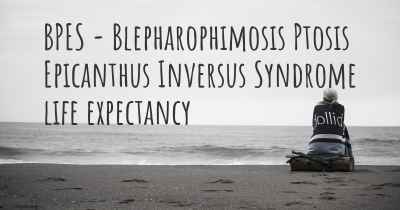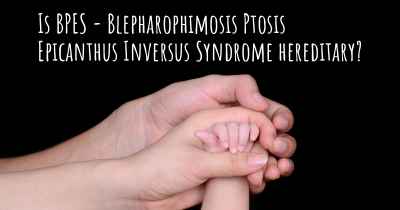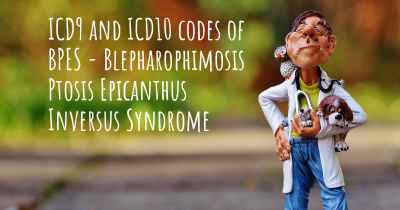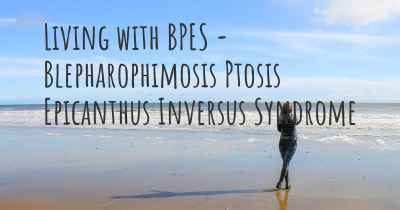Is there any natural treatment for BPES - Blepharophimosis Ptosis Epicanthus Inversus Syndrome?
Are there natural treatment(s) that may improve the quality of life of people with BPES - Blepharophimosis Ptosis Epicanthus Inversus Syndrome? Here you can see if there is any natural remedy and/or treatment that can help people with BPES - Blepharophimosis Ptosis Epicanthus Inversus Syndrome
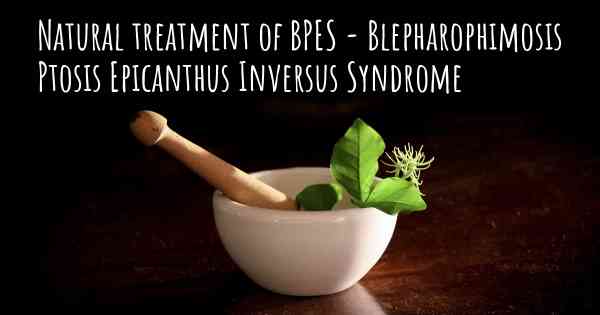
Natural Treatment for BPES - Blepharophimosis Ptosis Epicanthus Inversus Syndrome
Blepharophimosis Ptosis Epicanthus Inversus Syndrome (BPES) is a rare genetic disorder that affects the development of the eyelids and can cause various eye-related abnormalities. While there is no known cure for BPES, there are natural treatment options that can help manage the symptoms and improve the quality of life for individuals with this condition.
1. Eye Exercises and Massage
Eye exercises and massage can be beneficial for individuals with BPES. These techniques can help improve muscle strength and flexibility, which may help alleviate some of the symptoms associated with ptosis (droopy eyelids) and improve eye function. Consult with an eye specialist or therapist to learn specific exercises and massage techniques suitable for your condition.
2. Warm Compresses
Applying warm compresses to the eyes can help relieve discomfort and reduce swelling associated with BPES. The warmth helps improve blood circulation and relaxes the muscles around the eyes. Soak a clean cloth in warm water, wring out the excess, and gently place it over closed eyelids for a few minutes. Repeat this several times a day for relief.
3. Cold Compresses
In addition to warm compresses, cold compresses can also be beneficial for managing symptoms of BPES. Cold temperature helps reduce inflammation and swelling. Wrap a few ice cubes in a clean cloth and gently place it over closed eyelids for a few minutes. Be sure to avoid direct contact with the skin to prevent frostbite. Repeat as needed.
4. Eye Hygiene
Maintaining good eye hygiene is crucial for individuals with BPES. Keeping the eyes clean and free from any irritants can help prevent infections and further complications. Use a mild, non-irritating cleanser or baby shampoo to gently clean the eyelids and lashes. Avoid rubbing the eyes vigorously and always wash hands before touching the eyes.
5. Nutritional Supplements
Nutritional supplements may play a role in supporting eye health and overall well-being for individuals with BPES. Antioxidant-rich vitamins such as vitamin A, C, and E, as well as minerals like zinc and selenium, are known to promote eye health. Consult with a healthcare professional to determine the appropriate dosage and suitability of supplements for your specific needs.
6. Stress Management
Stress management techniques can be helpful in coping with the challenges associated with BPES. Stress can exacerbate symptoms and impact overall health. Engage in activities that promote relaxation, such as deep breathing exercises, meditation, yoga, or pursuing hobbies that bring joy and reduce stress levels.
7. Supportive Eyewear
Wearing supportive eyewear can provide relief and improve vision for individuals with BPES. Glasses or contact lenses prescribed by an eye specialist can help correct refractive errors and improve visual acuity. Additionally, specialized eyewear can be used to address specific visual abnormalities associated with BPES, such as epicanthus inversus.
8. Regular Eye Examinations
Regular eye examinations are essential for individuals with BPES to monitor any changes in eye health and ensure early detection of potential complications. An eye specialist can assess the condition, provide appropriate treatment options, and make necessary adjustments to the management plan based on individual needs.
While these natural treatment options can help manage the symptoms of BPES, it is important to note that they may not provide a complete cure. It is crucial to consult with healthcare professionals, including ophthalmologists and genetic counselors, for a comprehensive evaluation and personalized treatment plan.
